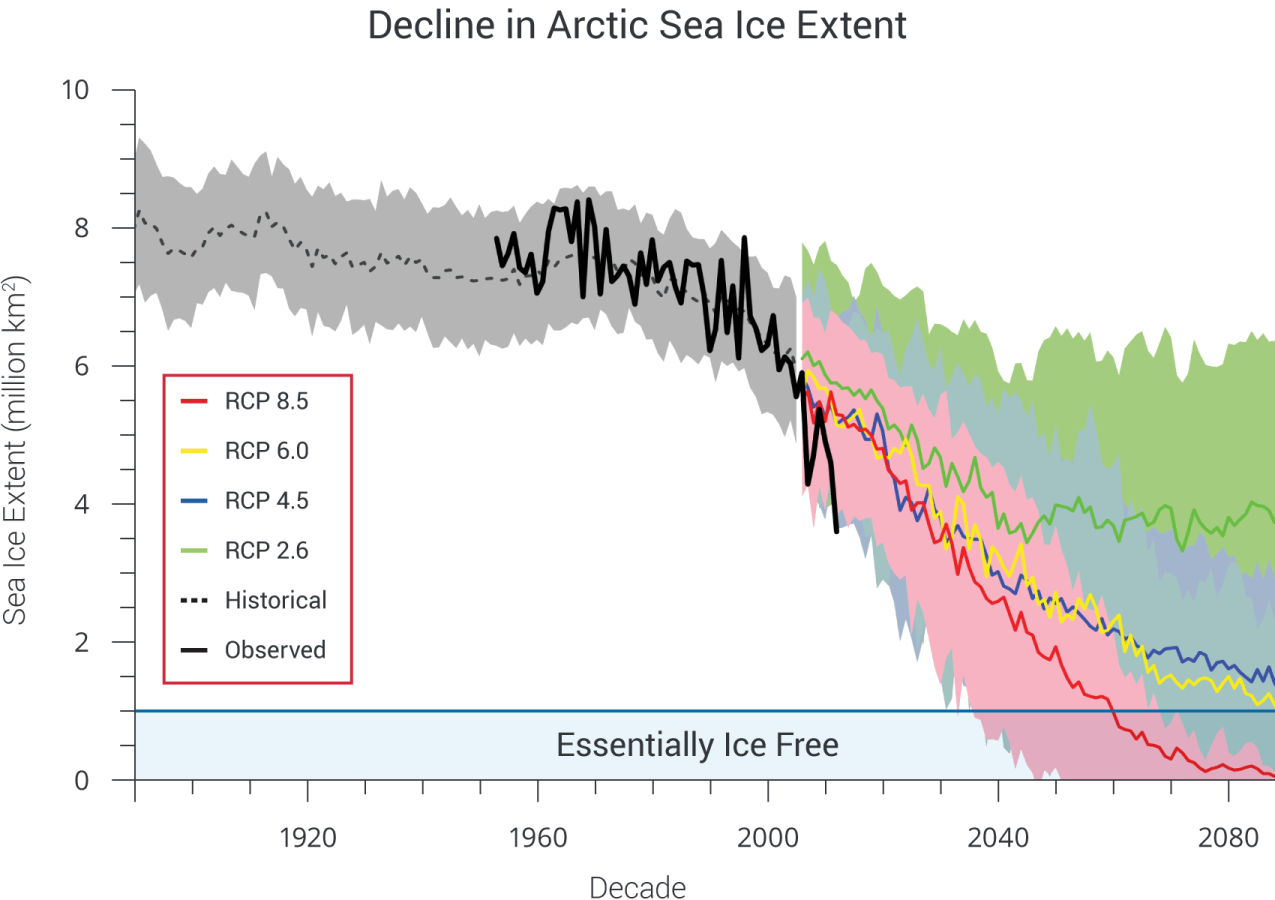| Projected Arctic Sea Ice Decline |
| The IPCC has really underestimated when the summer-time Arctic ocean will likely become ice, so it’s temperature estimates are likely low |
 | Figure 2.29. Model simulations of Arctic sea ice extent for September (1900-2100)
based on observed concentrations of heat-trapping gases and particles (through
2005) and four scenarios. Colored lines for RCP scenarios are model averages
(CMIP5) and lighter shades of the line colors denote ranges among models for
each scenario. Dotted gray line and gray shading denotes average and range of
the historical simulations through 2005. The thick black line shows observed data
for 1953-2012. These newer model (CMIP5) simulations project more rapid sea ice
loss compared to the previous generation of models (CMIP3) under similar forcing
scenarios, although the simulated September ice losses under all scenarios still
lag the observed loss of the past decade. Extrapolation of the present observed
trend suggests an essentially ice-free Arctic in summer before mid-century.139 The
Arctic is considered essentially ice-free when the areal extent of ice is less than
one million square kilometers. (Figure source: adapted from Stroeve et al. 2012136). |
|
| Source: National Climate Assessment |
| URL: http://data.globalchange.gov/file/6c06e9fb-29ea-41c1-acf5-c81ed0cbd831 |